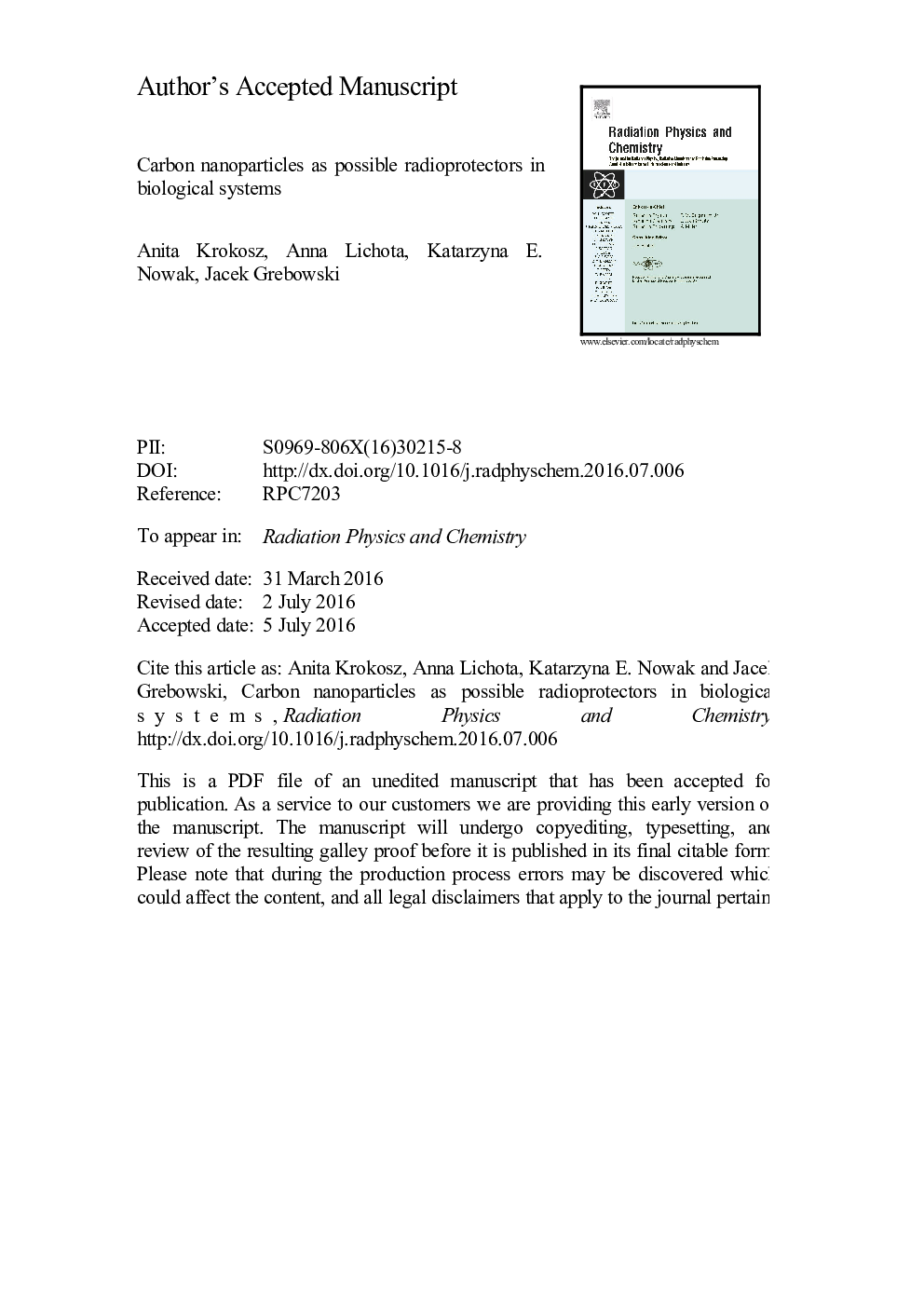| Article ID | Journal | Published Year | Pages | File Type |
|---|---|---|---|---|
| 5499337 | Radiation Physics and Chemistry | 2016 | 21 Pages |
Abstract
Ionizing radiation causes radiolysis of water and the production of reactive oxygen species (ROS), which interact with biochemically important molecules in cells leading to cell death. In order to reduce the dangerous radiation effects on cells, tissues and organs, the search for radioprotectors is essential. ROS result in damage to biomolecules, e.g. proteins, lipids and DNA, and as a consequence, cause the loss of cell function. The chemical and biological properties of fullerenes and other carbon nanoparticles enable the possibility of generating either oxidative stress or its attenuation by both scavenging free radicals and modification/upregulation of endogenous antioxidative systems in cells. This study discusses the possible applications of carbon nanoparticles as radioprotective agents and/or free radical scavengers. Special attention is paid to water-soluble fullerenes as they are promising radioprotectors and exhibit low toxicity and cytotoxicity.
Keywords
DRFMDADU145DF-1WBCsSWCNTsPBLsγH2AXPBMCsDSBsNDSRNSGPXADHGSHIC50MWCNTsCNTSESRBSADNA double-strand breaksROSPancreatic adenocarcinomabovine serum albuminLETAlcohol dehydrogenaseLinear Energy TransferGraphene oxideionizing radiationFree radicalsElectron spin resonanceSODperipheral blood mononuclear cellsSuperoxide dismutaseBiological systemsFullerenolsFullereneslactate dehydrogenaseLDHperipheral blood lymphocytesmalondialdehydeCarbon nanoparticlesSingle-walled Carbon NanotubesMulti-walled carbon nanotubesCarbon nanotubesNanodiamondsphosphorylated histone H2AXreduced glutathionewhite blood cellsglutathione peroxidasereactive nitrogen speciesReactive oxygen species
Related Topics
Physical Sciences and Engineering
Physics and Astronomy
Radiation
Authors
Anita Krokosz, Anna Lichota, Katarzyna E. Nowak, Jacek Grebowski,
